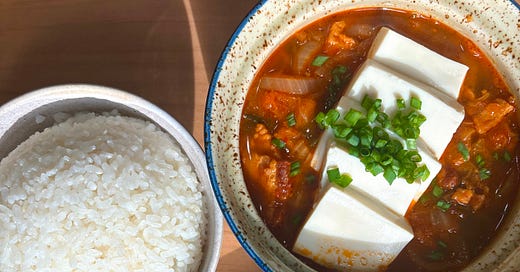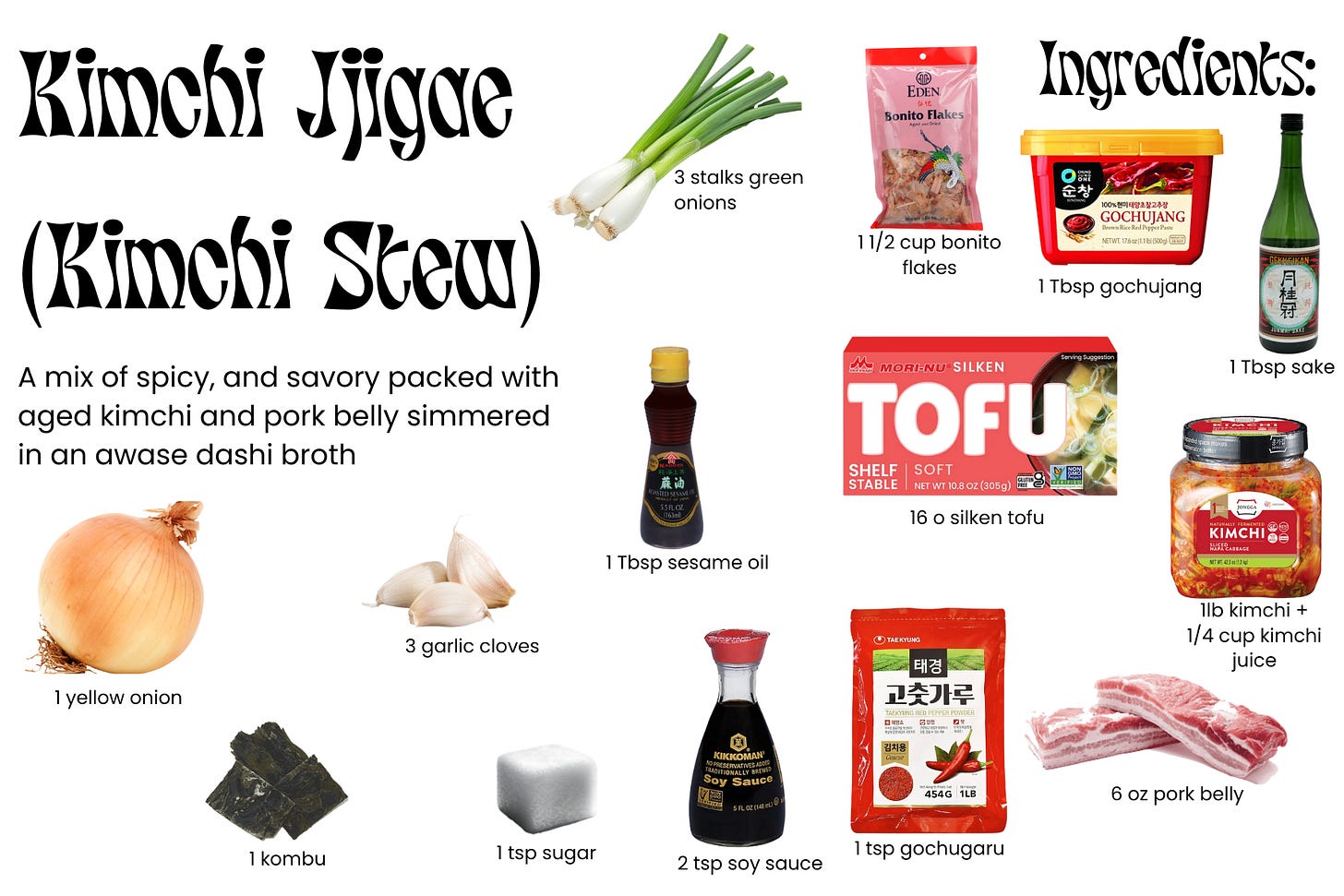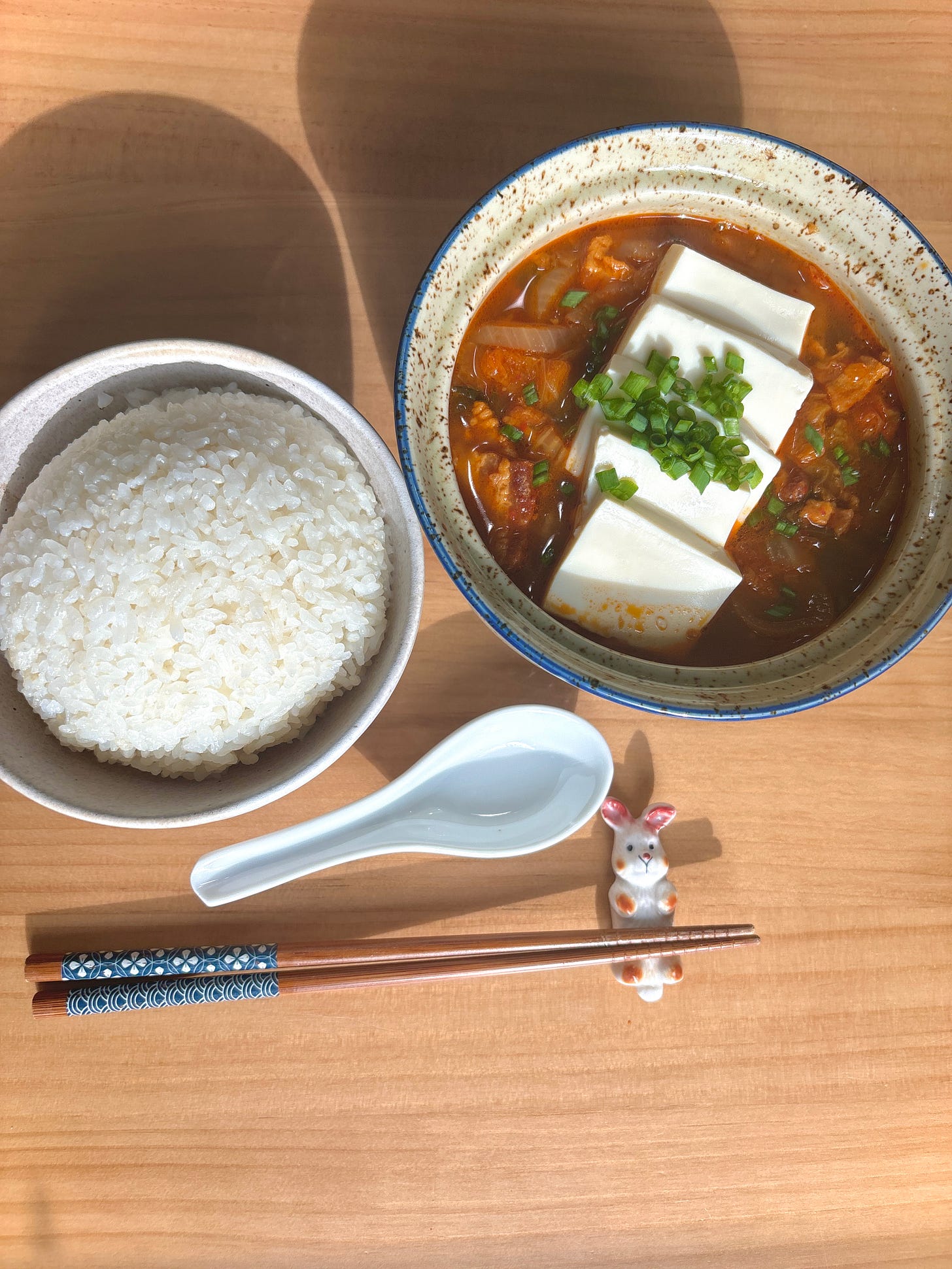Kimchi Jjigae (Kimchi Stew)
There are so many ways to make kimchi stews that every Korean family has its own version of making it. This is how I like mine, inspired by the way my Korean grandmother used to make it for me.
Traditionally, kimchi stew is made with anchovy stock, but I rarely have dried anchovies on hand. Instead, I use awase dashi, which I always have stocked for other recipes. This version leans a bit more Westernized, but it’s how I enjoy eating it.
Once extra step I do that makes it more Westernized is browning the pork belly before simmering the stew. It adds a depper, heartier flavor and a slight crunch. You can skip this step if you prefer a softer, mono texture.
Notes:
Kimchi: You can use homemade or store-bought kimchi. My favorite is from Costco.
Pork Belly: Traditionally used in kimchi stew, but for a vegetarian or alternative protein option, substitute with shiitake mushrooms, enoki mushrooms, or canned tuna.
Dashi Substitutes: If you don’t have awase dashi, you can use chicken or vegetable broth, though the overall flavor will change.
Tofu: I prefer silken tofu, but firm tofu works just as well.
Recipe
Servings: 2-3 people
Ingredients
Stew:
16 oz silken tofu
3 green onions, chopped
6 oz pork belly, cut into bite-sized pieces
1 tbsp sesame oil
1 tsp kosher salt or MSG
1 tbsp sake
1 lb kimchi, chopped
¼ cup kimchi juice (squeeze from the kimchi)
3 garlic cloves, minced
1 yellow onion, thinly sliced
Seasoning:
1 tsp gochugaru (Korean chili flakes)
1 tbsp gochujang (Korean chili paste)
2 tsp soy sauce
1 tsp sugar
Awase Dashi (Broth):
4 cups water
1 (6-inch) piece kombu
1 ½ cups bonito flakes
Note: If you don’t already have dashi prepared, set aside an extra hour to make this recipe. I recommend making a large batch of dashi to use throughout the week.
Instructions
Awase Dashi (Broth):
In a large pot, add 4 cups of water and kombu. Let it steep for 30 minutes with no heat.
Heat the pot over medium-high heat until it reaches a boil.
Remove the kombu immediately to prevent a slimy texture.
Add the bonito flakes without stirring—just let them absorb the water.
Bring the mixture to a boil, then reduce to a simmer for 5 minutes.
Skim off any scum from the top to keep the flavor clean.
Turn off the heat and let it steep for 15 minutes.
Strain through a sieve without pressing the bonito flakes, letting the liquid drain naturally.
Discard the bonito flakes. The stock is now ready to use.
Kimchi Stew:
Cut the pork belly into bite-sized pieces.
Chop the kimchi into smaller pieces. The easiest way to do this is by placing it in a bowl and cutting it with kitchen scissors.
In a large pot over medium-high heat, add 1 tbsp of oil.
Add the pork belly and cook until golden brown on both sides, about 5-7 minutes.
Drain the excess oil, but keep about 2 tbsp in the pot to enhance the flavor.
Lower the heat to medium-low. Add the chopped kimchi, kimchi juice, green onions, salt, sugar, gochugaru, gochujang, sesame oil, sake, and dashi stock.
Cover and cook for 10 minutes over medium-high heat, allowing the flavors to meld.
Stir the stew, then cover and cook for another 10-15 minutes over medium heat.
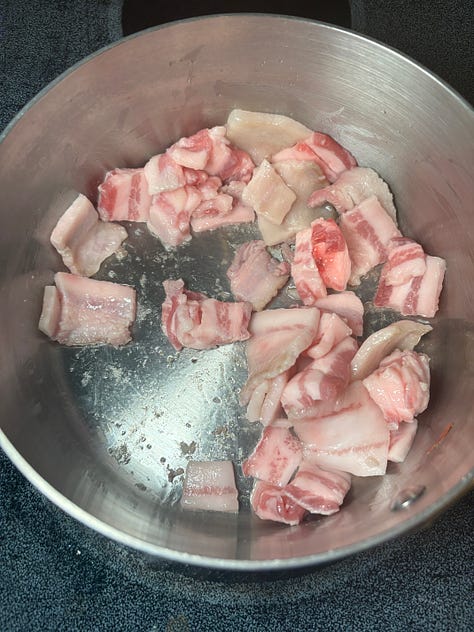
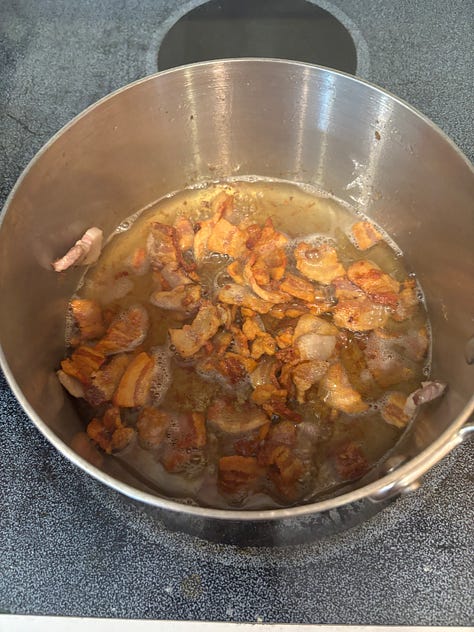
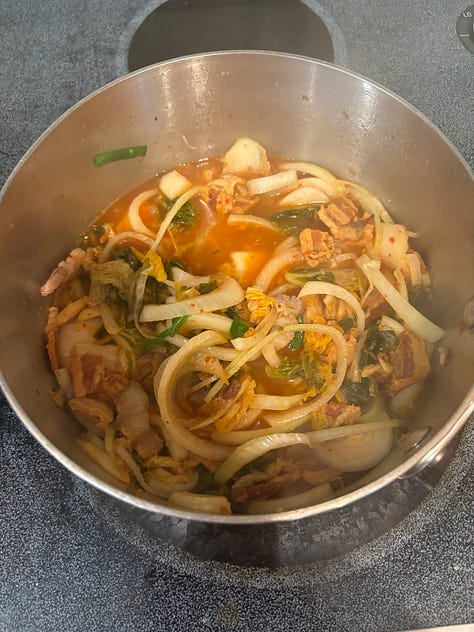
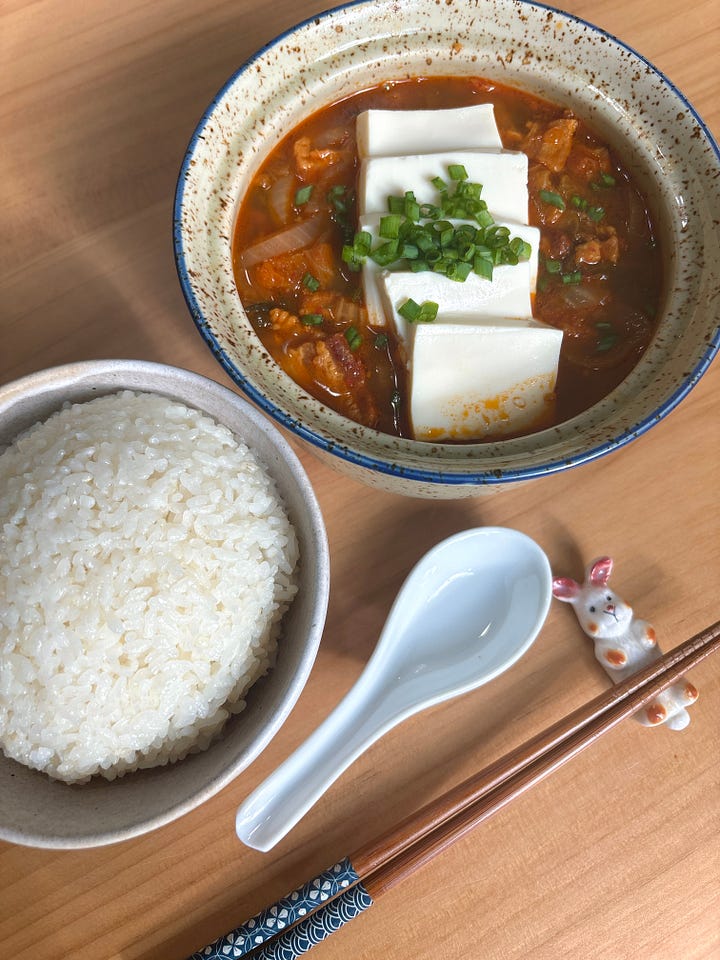
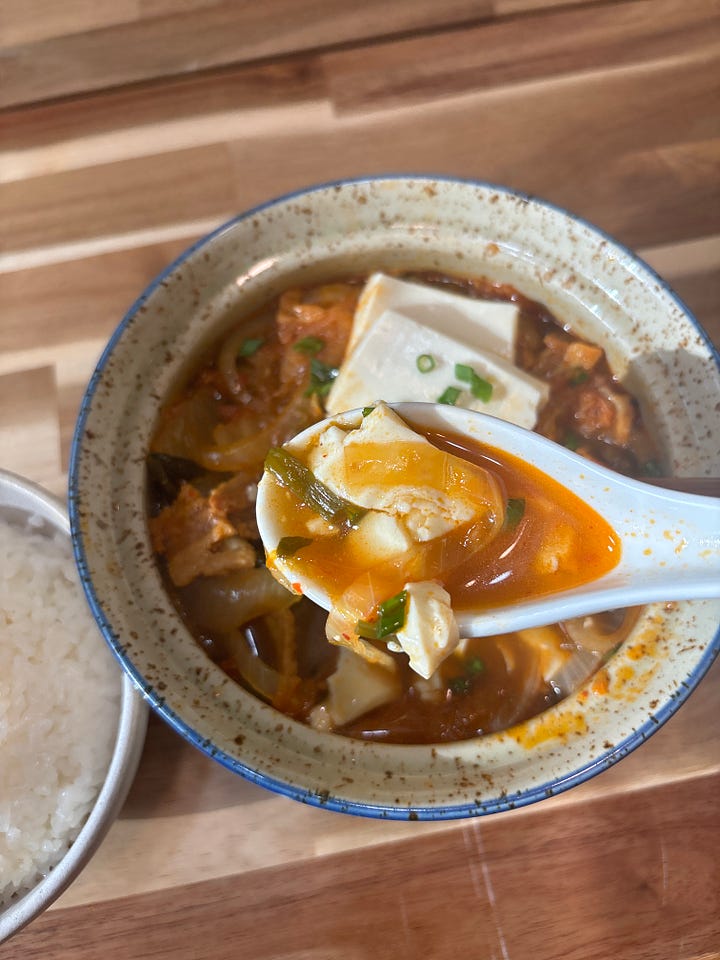
Top with silken tofu and extra green onions.
Serve with steamed rice and enjoy!


